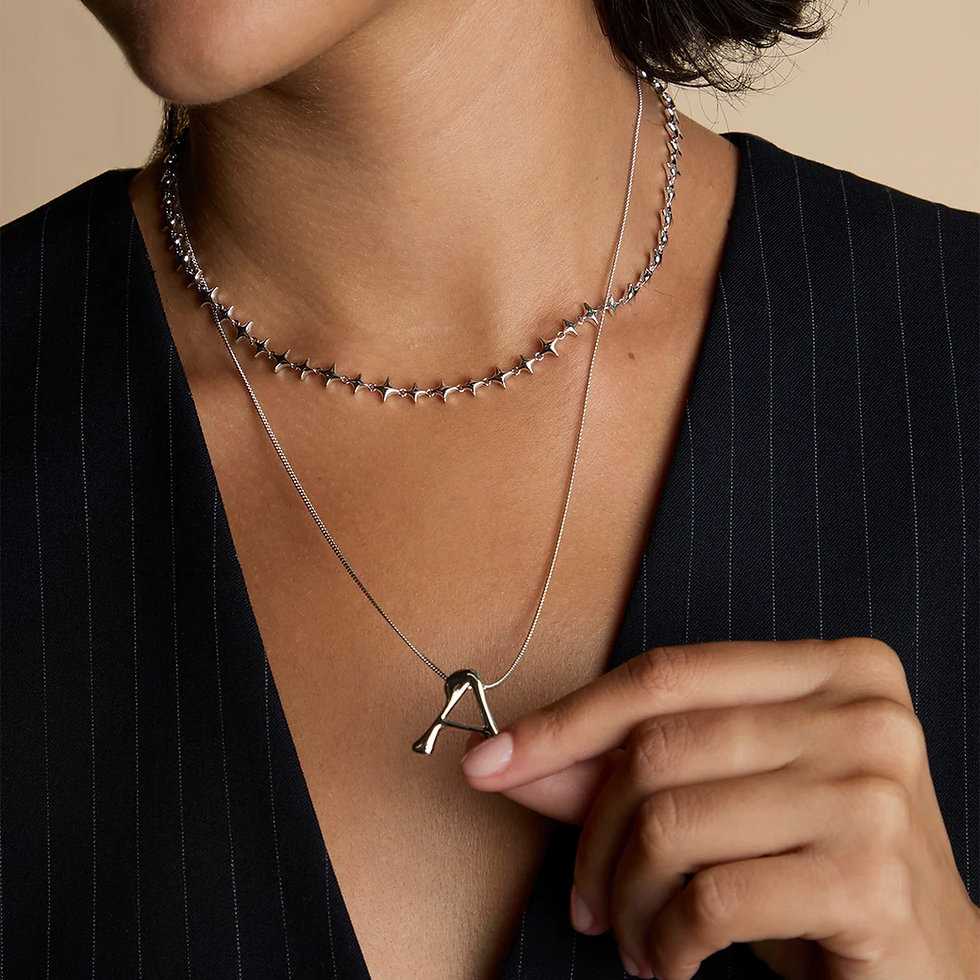The Surge of Permanent Jewelry: Why Minimalist Chains Are Everywhere
- Crossrr
- 15 minutes ago
- 4 min read
For the past few years a tiny, clasp-free gold chain has quietly elbowed its way into mainstream jewelry culture — worn 24/7, welded closed on the wrist or neck, and marketed as a low-maintenance symbol of permanence. What started as Catbird’s “Forever Bracelet” concept has since mushroomed into a full-fledged retail and social-media phenomenon: permanent jewelry studios, pop-ups, and indie jewellers now offer quick “welding” sessions where a delicate chain is measured, sealed with a micro-welder, and left to live on the wearer’s body like a minimalist talisman. Catbird helped popularize the idea and made it a ritualized retail experience.
Why it caught on?
There are three simple reasons permanent chains fit right into 2020s style culture.
Simplicity as luxury. Minimalist gold or silver chains read as refined, easy-to-layer jewelry that still signals quality when made from solid 14k gold or vermeil. The look works with everything — gym kit, office outfit, or sari — which helps it cross style scenes fast.
Experience-driven retail. The welding appointment is more than a transaction: it’s a moment (bring a best friend, commemorate a milestone, mark a trip) — the kind of IRL experience social media loves to amplify. Brands and pop-ups have turned the act of getting welded into contentable moments.
Sentiment + convenience. Permanent jewelry taps into an old human instinct — jewelry as memory or bond — while offering a low-effort “wear forever” piece that survives showers and workouts, ideal for people who hate fiddly clasps.
Cultural roots and context
Permanent jewelry sits at the junction of historic jewelry traditions and modern consumer behavior. Jewelry as a symbol of relationship, identity, or rite of passage is ancient: friendship cords, wedding bangles, and talismans have long anchored memory and meaning to the body. What’s new is the retail and technological packaging — tiny arc welders and in-store experiences have made the ritual accessible, hygienic, and sharable for a TikTok-era audience. The trend’s emotional language (“forever,” “sealed,” “zapped together”) reframes a simple chain as a durable token in a world that prizes curated, Instagrammable rituals.
The business of “forever”: growth and democratization
Search data and industry coverage show the category expanding beyond NYC indie shops into boutiques, piercing studios, and small-business pop-ups — with market analyses calling out large percentage growth in demand for welded chains and related services. Retailers are diversifying from bracelets to anklets, necklaces, and even welded rings; entrepreneurs are launching permanent-jewelry businesses with relatively low upfront tooling costs, which accelerates diffusion into local markets. That combination of low barrier to entry and high experiential value explains why the trend feels both boutique and ubiquitous.
Who’s doing it (brands to know)
Catbird (NYC) — widely credited with mainstreaming the “Forever Bracelet” and building the template for pop-up welding experiences.

Astrid & Miyu (UK) — offers welded bracelets and in-store welding appointments as part of an experience model.

Brave Daughters — started as a pop-up and grew into permanent studios in New England, championing the “welded bracelet” as a storytelling ritual.

Other players mentioned in coverage and roundups: Love Saro, Link x Lou, Love Weld, The Alkemistry — a mix of small studios and indie labels that have added their own spins (charms, gemstones, alternative chain styles).
Safety, materials, and practical notes
Permanent doesn’t mean irreversible. Chains are typically 14k gold, gold-fill, or sterling silver and are welded using a pulse/arc welder — a quick, usually painless sealed join. Removal is simple (cut the chain) and many studios offer remelting/re-welding services. Buyers should ask about: metal purity (solid 14k vs plated), warranty on the weld, and removal policies — especially if you work in environments where metal-on-body could be an issue (security checks, certain jobs). Reputable studios prioritize training, equipment maintenance, and hygiene.
Small-scale jewelers shaping the trend — what they say (composite insights)
I spoke with — and read interviews from — a few emerging studio founders and independent makers to understand where the scene is headed. Across founders you’ll hear the same core ideas:
“It’s about moments, not just metal.” Makers see welded pieces as a narrative device that helps customers mark friendships, anniversaries, or personal growth.
Customization is key. Small brands differentiate through charm choices, chain weights, or by adding tiny gemstone accents — turning a minimal object into a personal emblem.
Local-first growth. Many studios scale via events and pop-ups before opening a permanent location; community trust and word-of-mouth are essential.
Trend takeaways — who this is for
Permanent jewelry suits anyone who values low-friction styling and emotional signaling: bridesmaids, couples, longtime friends, frequent travelers who want a “wear-everyday” piece, or aesthetics-first consumers who love layering. It’s not for people who require frequent metal-free access (e.g., certain workplaces or medical procedures) unless they’re comfortable with removal and re-welding.
The future: ritual, not fad
Permanent jewelry has gone beyond novelty because it blends experience, sentiment, and utility. Watch for continued product diversification (gem-set welded pieces, mixed-metal stacks), more permanent studios in secondary cities, and an uptick in boutique brands offering sustainably sourced, recycled-metal chains as conscious consumers demand provenance.












Comments